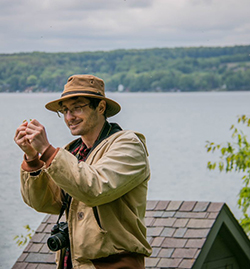Restoration Science Center
Conservation on Private Lands Initiative
Protected private lands are double the area of national park land in the lower 48 states, and much of this land is being used in novel and productive ways to benefit both landowners and biodiversity. In this initiative, RSC researchers work with private landowners, providing guidance and recommendations on how to support biodiversity and conservation enhancements on their land, and to improve landscape productivity and ecosystem function. The RSC delivers the science-based support needed to sustain wildlife and its habitat on private lands, working to advance a nation-wide trend in private lands conservation.
Interested in learning more or getting involved? Contact our Conservation on Private Lands Coordinator!

Photo: Lilly Kramer
Sam Quinn
Director of Conservation on Private Lands Initiative
[email protected]

